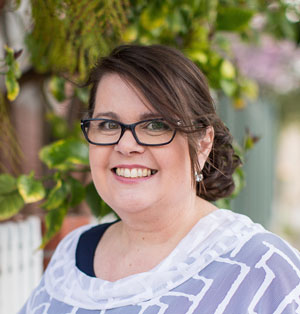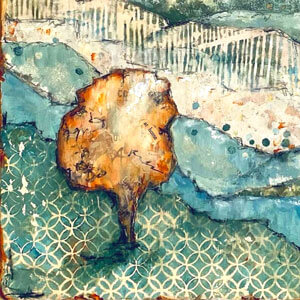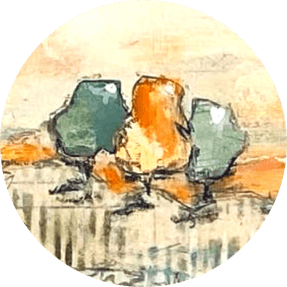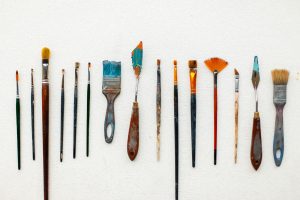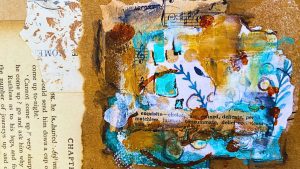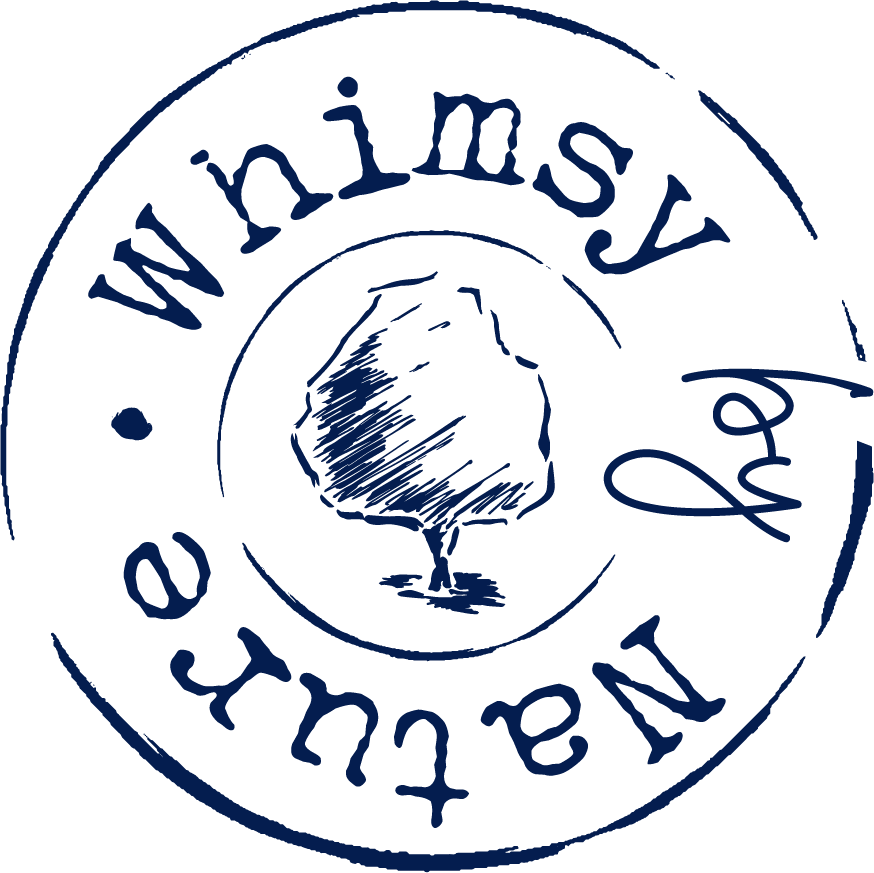Do more than choose your new favourite art journal (although that’s fun too)!
If you are a little tempted by the idea of beginning an art journal or have started playing and are still finding your flow, the simple premise here has the potential to greatly enrich your practice. I invite you to take a quiet moment now to make some connections that will increase your joy. And, if you don’t feel like reading a whole post, be sure to skip down for the link to the free printable labels or watch the video.
Finding a place of peace in our journals is such a practical act of self-care because the time, cost and space can be modified to our situation. And depending on how we feel, it can be an act of play, exploration or healing. Even in times of difficulty, we can often take steps to move toward peace, and my art journal has been that sanctuary for me.
However, all the beautiful online inspiration and art journal flip-throughs can sometimes lead to getting stuck; a sense of inadequacy or confusion about our own style can sometimes get in the way of creative expression. It all seems so easy until we stop watching the videos and sit down with a blank page.

Art journaling freedom happens when we figure out how our purpose, personality and creative preferences relate to our art practice, and we develop a flow aligned to our authenticity.

Getting clear about purpose has transformed my journaling experience.
A sure way to achieve frustration and disappointment is to try to achieve all our artistic desires in one place. A single art journal page is unlikely to be both a place to experiment and learn, as well as creating something that looks refined and perfect. Add to that some improbable expectations, such as wanting to freely express messy emotions and produce something fabulous to photograph, whilst enjoying ourselves, and we’re likely headed for dissatisfaction.
For me, the answer lies in having a few journals (and other surfaces) prepared for different uses and being aware of how and why I am choosing to work with them. I generally have a few small projects I can move between at any time, and I find once I am in a good flow, they all influence each other, and a natural symbiotic energy finds its way into the work.
As organic as this sounds in theory, realistically it takes a little bit of mind-setting and practical preparation to foster this creative flow. It starts with making some choices that are authentic to each of us as individuals. Let’s begin by considering some of the types of visual journals before we connect them to how you like to create.
Such evocative choices - the different functions for visual journals.
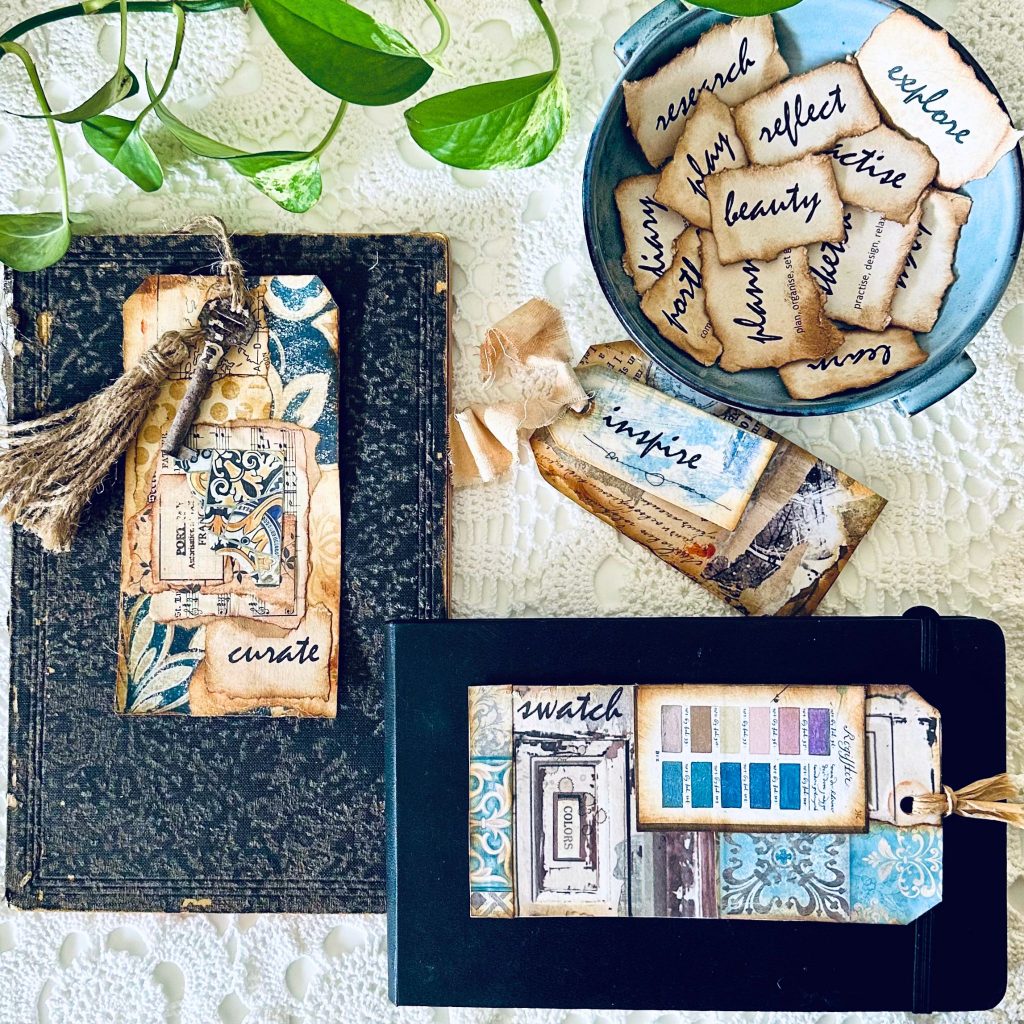
A portfolio
A place to celebrate and showcase fully developed ideas, styles and abilities in a form which is a completed work of art of itself.
A visual diary
A place to learn processes, explore techniques and develop ideas that may then be interpreted further as inspiration for other pieces of artwork. The paper is often heavier than a sketchbook, extending it to the use of wet media and layers.
A sketchbook
A place to practice, sketch, write, and plan, more like a notebook with less expensive, lighter weight paper than a visual diary.
An art journal
A place for self-expression with or without words, to journal thoughts and feelings, to document life visually, and curate beauty.
A altered book (or junk journal)
A place with rustic character to respond to, an often welcome alternative to a blank page, with in-built inspiration from words that emerge from the background.
A journaling Bible
A place where Scripture is already on the page to draw meaning from, with space to journal alongside.
Why are you creating, and what feels good to you?
A good pIace to start could be by making choices about which of the above journal types feel like they fit most with your reason for journaling.
Do you….
- want to showcase your art journal pages more than you want to journey personally?
- want to find a place of peace and healing more than you feel compelled to push yourself artistically?
- want to explore art supplies and processes more than you want a perfectly finished page?
- want to take your artistic progression seriously or enjoy the moment and play?
If all these goals are important to you, that’s ok too – just being aware of this enables you to separate your intentions across different creative sessions or projects. This way, when journaling, you are not trying to fulfil competing priorities.
For me, I want to do it all and feel compelled to create for all the reasons mentioned, so I have a journal for each purpose. The way that creating organically happens is that often there is overlap, so I don’t confine myself if my project evolves into something more (or less). The main thing is that I am able to find more joy in journaling because I am released from the pressure of trying to make perfectly finished pages while I’m learning a new skill, intentionally spending time nurturing my spirit, planning, or just playing.

So where to begin?
Why not start simple and let it grow? Identify the key reason you feel drawn to art journaling, and once you have chosen your journal type, seek out inspiration which is in line with your own purpose. All it takes is to get out the pencils, paints or collage paper, and you’re on your way to creating in a way that feels authentic to you. Start without any expectations of producing perfect pages, and you will gradually find your inner artist naturally emerging.
As a little extra, I’ve made some free downloadable printables of journaling labels and some sample tags; making a bunch of tags can even be a great place to start. I’d love to know if you have any queries and how you get on.
